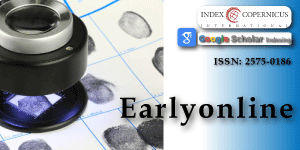A Temporal Forecasting Framework for Palm Crease Analysis: A Phenomenological Approach
Main Article Content
Abstract
Recent forensic studies, including investigations into the relationship between palmar “lifeline” length and mortality, highlight both the biological reality of palm creases and the limitations of associating them directly with lifespan. Palmar creases are anatomical structures formed between the 12th and 17th weeks of gestation, present at birth, and evolving in visibility across the lifespan [1-3]. Building on this foundation, this paper introduces a temporal forecasting framework that interprets palm crease geometry as a structured map of personal life transitions.
Unlike traditional palmistry or simple crease-length studies, this model produces month–year markers divided into six-month periods beginning at age 5, identifying windows of highest probability (Yog) for major transitions such as relational changes, career shifts, or health events. Accuracy increases when temporal markers align across multiple creases, supporting probabilistic inference of event domains.
The model has been refined over 40 years of application with thousands of individuals, incorporating both retrospective validation and prospective feedback. This long-term iterative process provides an unusually strict validation regime rarely observed in unconventional forecasting frameworks. While bounded in scope, its reproducibility, falsifiability, and temporal granularity make it a promising subject for forensic inquiry. Beyond forensic applications, the model provides a structured way of engaging with unbounded human problems — contextual life transitions that resist deterministic prediction yet display measurable temporal regularities. Unlike DNA-based or survey-based models, which often require invasive sampling or detailed personal information, this framework is non-invasive, requires only palm photographs and month–year of birth, and can forecast both past and future major life transitions (changes) of any individual without additional inputs.
Article Details
Copyright (c) 2025 Chandra S

This work is licensed under a Creative Commons Attribution 4.0 International License.
Strevens P. The Learner and Teacher of ESP. In: Chamberlain, D. and Baumgardner, R., Eds., ESP in the Classroom: Practice and Evaluation, Modern English Publications in association with the British Council, London. 1988;39-44. Available from: https://www.scirp.org/reference/referencespapers?referenceid=2894499
MedlinePlus, 2021.
Live Science, 2012.
Sharma A, Behrens SH, Chernoff YO, Bommarius AS. Modulation of the Formation of Aβ- and Sup35NM-Based Amyloids by Complex Interplay of Specific and Nonspecific Ion Effects. J Phys Chem B. 2018;122(19):4972-4981. Available from: https://doi.org/10.1021/acs.jpcb.7b12836
HSPI, 2025
Teghan Lucas, Amrita Dhugga, Maciej Henneberg. Predicting longevity from the line of life: is it accurate?2019;82(2). Available from: https://www.researchgate.net/publication/333915416_Predicting_longevity_from_the_line_of_life_is_it_accurate
Health, relationship, work, relocation
Typically >85% hits

